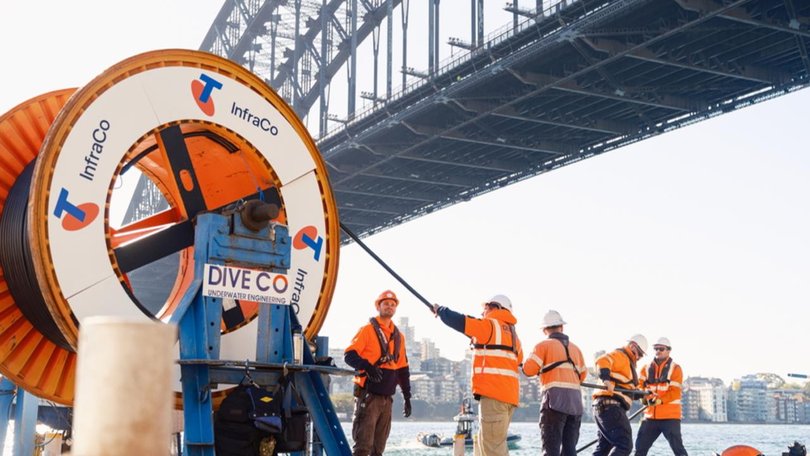Fibre optic internet to fire up downloads in Australia as Telstra promises move from gigabits to terabits

Australia’s busiest internet route could get a speed boost of up to six times after Telstra launched the first major milestone in its $1.6 billion fibre optic network.
The company activated the Sydney-to-Melbourne coastal connection of its internet project on Tuesday, promising transmission rates of up to 700 gigabits per second on a single fibre channel.
Telstra also revealed a study found the network could boost Australia’s gross domestic product by $29 billion in 2040 and support more than 84,000 jobs in fields such as artificial intelligence, agriculture, healthcare and defence.
Sign up to The Nightly's newsletters.
Get the first look at the digital newspaper, curated daily stories and breaking headlines delivered to your inbox.
By continuing you agree to our Terms and Privacy Policy.The announcement comes after the federal government named AI as a national priority and the Productivity Commission estimated the technology could add more than $116 billion to the economy over the next decade.
Telstra’s project - renamed the Aura Network - is designed to connect mainland capital cities with a 14,000km dual-cable network offering transmission speeds up to 6.3 times as fast as current connections.
More than one-third of the network had now been built, Telstra InfraCo executive Dino Georgiou said, including the latest route that was “busiest digital highway in the country” and carried more than twice the data of other routes.
The Sydney-Melbourne connection, which runs through Canberra, would also deliver ultra high-speed internet connections to regional towns along its path, such as Monash, Cooma and Wollongong.
“We’re really moving connectivity from a gigabit to a terabit world,” Mr Georgiou told AAP.
“We’re going to see the network enable new use cases for AI and digital, and also increase job creation opportunities in areas like health, education, mining and transport, which is going to be critical.”
The announcement follows the June launch of a connection between Sydney and Canberra, with connections to Adelaide, Perth and Brisbane due next.
An Oxford Economics report analysing the fibre network and commissioned by Telstra found it had the potential to boost GDP by $29 billion in 2040, including a $5 billion boost in Australia’s regions.
The Aura Network would also support 84,000 jobs, it found, and could add an additional $7 billion to the economy if Telstra pursued “potential routes” including connecting Melbourne to Hobart, Brisbane to Darwin, and Darwin to Perth.
Investments in Australia’s broadband backbone were critical, Mr Georgiou said, as internet traffic was expected to multiply between five and nine times by 2033 and would underpin national investments in digital innovations like generative AI models.
“If we don’t make these investments now, Australia will be left behind,” he said.
“We were very pleased to see that the government has made AI a national priority and connectivity is at that call, because without ... high-capacity, high-bandwidth fibre to connect our data centres and our businesses, we’re not going to be able to scale AI.”
In its interim digital technology report, the Productivity Commission estimated AI investments could raise labour productivity by 4.3 per cent over the next decade, equivalent to $116 billion.
Telstra’s Aura Network, due to be completed within 18 months, is expected to compete with fibre networks planned by HyperOne and Subco.
